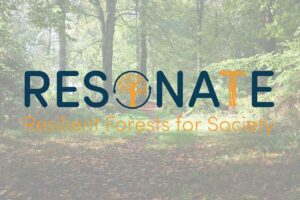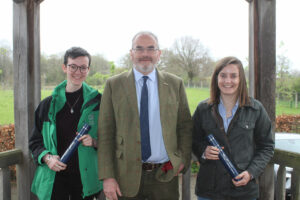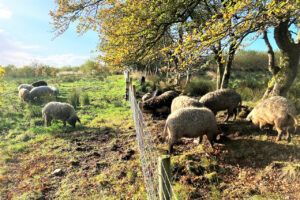How Understanding Attitudes Can Help in Achieving Woodland Ambitions
 A recent Defra and Forestry Commission study has segmented private woodland owners and farmers according to their shared attitudes and motivations, so furthering our understanding of how to motivate increased woodland management and creation by these key actors. Chris Eves, the research leader at AECOM, explains the significance of their findings.
A recent Defra and Forestry Commission study has segmented private woodland owners and farmers according to their shared attitudes and motivations, so furthering our understanding of how to motivate increased woodland management and creation by these key actors. Chris Eves, the research leader at AECOM, explains the significance of their findings.
The Government’s ambitions in terms of woodland management and creation will require a step change if they are to be accomplished. Looking outside of the Public Forest Estate, private woodland owners must be motivated to deliver increased levels of management. There is also a pressing need to encourage a greater number of private landowners, such as farmers, to plant new woodlands. However, until late little information has been available on the attitudes of woodland owners, whilst our understanding of what steps might be taken to encourage woodland creation have been limited to an assumption that farmers will plant at the right price.
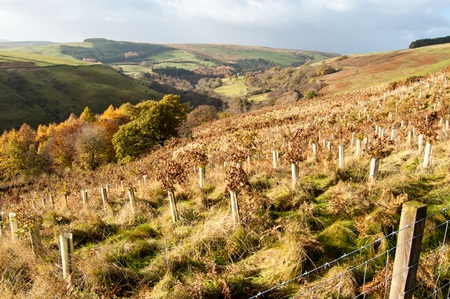
Newly created woodland on the Buccleuch Estates, Dumfries and Galloway. Author copyright.
To address this crucial knowledge gap and so establish the most effective means of influencing behaviour and promoting change, Defra and Forestry Commission England tasked a consortium led by AECOM with the development of a segmentation model to divide woodland owners and farmers into distinct groups based upon their shared characteristics. To develop this model two extensive surveys were undertaken, with a thousand private woodland owners and farmers engaged respectively. Statistical analysis was then used to divide both samples into five segments.
Amongst existing woodland owners, a segment titled ‘Profit-seeking Guardians’ was identified as a key group for engagement. These owners appear keen diversify their activities and would manage their woodland more. However, they struggle to make their woodlands viable. At the same time, this group was most likely to be responsive to a range of interventions, including the provision of advice, increased grants, and improved local woodfuel markets. These owners controlled just under a quarter of the sampled woodland area and had relatively large and often multiple land holdings. Seeking to increase levels of woodland management amongst these owners may therefore be both a realistic and effective policy aim.
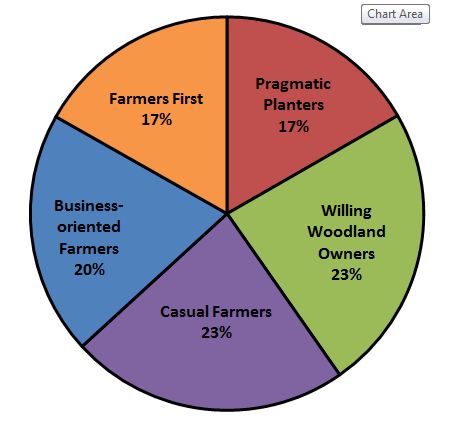
The segmentation divided our sample of farmers into five distinct groups based on their shared characteristics. Author copyright.
The woodland creation segmentation meanwhile found that two groups of farmers – the ‘Pragmatic Planters’ and ‘Willing Woodland Owners’ – appear over ten times more likely to plant than those in the three remaining segments. ‘Pragmatic Planters’ tended to have large land holdings, environmental sympathies and an interest in timber, woodfuel, carbon sequestration, and income generation. The ‘Willing Woodland Owners’ had smaller landholdings but were willing to sacrifice income for the environment, so diverging from the Pragmatic Planters in terms of their profit motive. Advice on how woodland planting can deliver public goods may encourage this particular group to plant more woodland.
The findings of this research will help to inform delivery of the new Rural Development Programme for England (RDPE) 2014-2020 and will provide a significant evidence base for developing forestry policy going forward. The study also includes a set of ‘golden questions’ which allow individuals to be allocated to a segment on the basis of a short questionnaire, so supporting localised application. The full reports and a concise summary of the research are available through both the Defra and Forestry Commission website.


